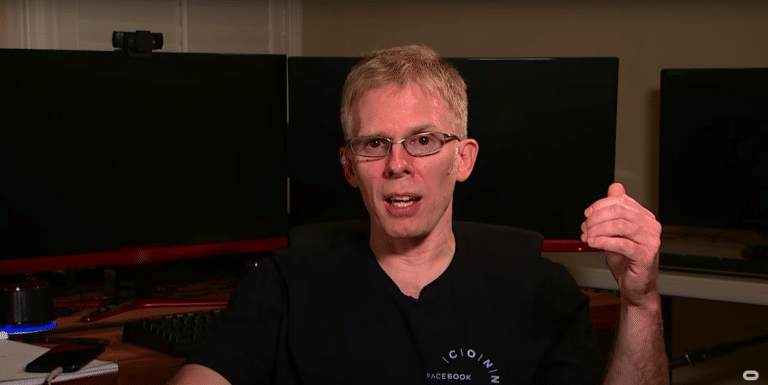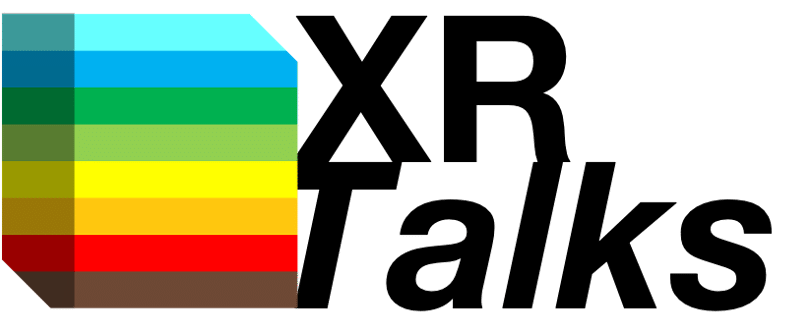
 XR Talks is a series that features the best presentations and educational videos from the XR universe. It includes embedded video, narrative analysis and top takeaways. Speakers’ opinions are their own. For a full library of indexed and educational media, subscribe to ARtillery PRO.
XR Talks is a series that features the best presentations and educational videos from the XR universe. It includes embedded video, narrative analysis and top takeaways. Speakers’ opinions are their own. For a full library of indexed and educational media, subscribe to ARtillery PRO.
Every year at Facebook’s annual Connect event (formerly Oculus Connect) a top highlight is John Carmack’s unfiltered and technically-robust talk. For those unfamiliar, Carmack is Oculus’ former CTO, now in a part-time advisory role for Facebook Reality Labs (FRL).
Because the address is long and deep, we’ve synthesized it (as best one can) for this week’s featured XR talk. Following similar treatment for FRL Chief Scientist Michael Abrash’s Connect 7 talk, you can see the full video below, along with narrative highlights and strategic takeaways.
End of the Beginning
Right out of the gate, Carmack addressed the elephant in the room: Oculus increasingly being swallowed by Facebook. VR die-hards have called this the “end of the beginning,” but Carmack says VR represents less than half of Facebook’s spatial efforts. So the FRL umbrella is logical.
As for VR’s current status and market positioning, Carmack has mixed feelings. On one hand, there’s some disappointment that VR isn’t bigger. That’s especially true in a pandemic, whose global lockdowns should have prompted VR’s “coming of age” given its ability to defy distance.
Facebook’s inability to ramp up production to meet demand couldn’t be helped he says, but it failed to meet the moment with a social VR app. It previously shelved Rooms and Spaces in preparation for Horizon. But the result was no social app for sheltered-in-place masses.
“This could be kind of insensitive, but the global lockdown and pandemic should have been sort of the global coming of age for virtual reality where this was the opportunity to defy distance, defy reality, and all of that. But we’re only sort of accidentally benefiting from this, where not only were we sold out most of the time — we couldn’t just produce units that people wanted to buy, and that is not an easy thing to just rapidly change….But worse, all of our social experiences were basically killed or deprecated…We had Rooms, Spaces, co-watching and all those are gone… basically, we weren’t ready.”

Half Full
But on the bright side, the demand signals tracked over the past year now enable Facebook to better gauge and optimize production levels. It also means lots of market anticipation and pent-up demand for Horizon. The same can be said for Quest 2, whose pre-orders ship next week.
Speaking of Quest 2, it likewise represents a bright spot in Carmack’s eyes. Even for the famously scrutinizing and legendary programmer, Carmack considers Quest 2 “close to a pure win.” It’s better, faster, cheaper “and we’re making a ton more of them,” he says.
Continuing a theme of pros and cons, VR market segments and verticals will fall into COVID-advantaged and COVID-disadvantaged buckets (our words). Carmack sees little chance of location-based VR surviving… but VR fitness could emerge as an unforeseen killer app.
“Location-based VR has probably taken a terminal hit from this. It’s going to be a long time before people probably feel comfortable going someplace and putting on a shared public headset and that’s, you know, too bad […] Exercise as a primary application of VR is really winning…People are ok with kind of making a sweaty mess in their own personal headset.”

At Work
Speaking of VR use cases and how the technology is advancing towards those ends, Carmack is bullish on VR productivity apps for knowledge workers. This vision can be seen to some degree in Facebook’s Infinite Office, which was shown as a concept at Connect 7 (video below).
Speaking more practically and concretely, Carmack unpacks technical specifications that are bringing virtual office work within reach. This includes multiple 1080p screens whose resolution enables “real work” and even “advantages over laptops in some situations,” he says.
Though this is getting to a viable stage, it’s still missing critical elements of knowledge work such as collaboration. Companies like Spatial are working to crack that code, while Carmack has ambitions for dynamic communications such as receiving and taking calls in an elegant way.
“Putting on the headset should be as seamless as answering a phone call because eventually, you might sort of be answering phone calls in VR if we get to where we want to be with communication…you want to be able to be paged, put on the headset and just immediately be there.”
History Lessons
Panning back, Carmack reflects on Oculus’ historical design principles and where the product ended up in its current iteration (Quest 2). This is a good lesson in steadfastness, market dynamism, unintended consequences, and the need for agility (and perhaps deep pockets).
“Having things converged now on our VR platforms is an enormous relief. It’s really hard to overstate how much drama internally this has been over the years, where my vision for VR was always as this universal device — we should be able to play games, we should be able to browse the web, we should be able to do productivity things, we should be able to connect to a PC, to cloud services…it’s virtual, we can do anything, it should be universal. But most of the other founders were really about ‘we want this high-end awesome gaming system’, and that caused enormous tension through the years. And it’s kind of ironic how we wound up with this system where we have this lower-powered gaming-focused device which wasn’t really what anybody was aiming for at the beginning.”
Of course, this all just scratches the surface for a 90-minute talk from the always-articulate Carmack. The full talk is below with more technical detail and visions for where Facebook VR hardware could go next, including wireless tethering (Oculus Link) and the rest of the spec sheet.





